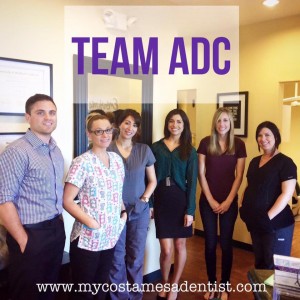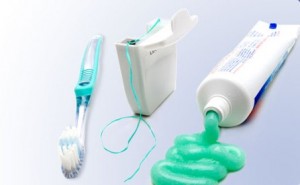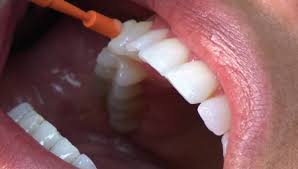By Dr. Jeremy B. Jorgenson
Maintaining Healthy Teeth

I know, I know, visiting your dentist two to four times a year isn’t always convenient or looked forward to, but going to the dentist regularly is exactly what can prevent you from having a painful and unpleasant dental experience later. In dental care, prevention and education are key.
Like other conditions and diseases of the body some are governed by genetics and environment, but a large part is also based on what we do to take care of ourselves. Unfortunately, dental care can often take a back seat to other things until the symptoms become urgent, painful, or even embarrassing. Don’t wait until a dental problem arises. Visiting your dentist at least two times a year can screen for oral cancer, issues with breath (an indicator of internal health), active decay, periodontal disease, orthodontic conditions, damaged teeth, etc. Finding a problem in its early stages will provide a wider variety of, and often cheaper, solutions to your oral conditions. The exam can also reveal other serious problems with health such as high blood pressure, diabetes, infections, and more.
You should discuss with your dentist all medical history and any issues that you might be concerned about. Your dentist should be an integral part of your healthcare team just like your regular physician. In fact, you might even be seeing your dentist more often than your other healthcare providers. Prevention is the best thing you can do for your mouth and your body.
The dental exam should consist of an oral cancer screening, x-rays, an exam by your hygienist which may include probing and periodontal charting, and an oral examination by your dentist. The exams are quick, but can reveal a lot about the state of your health. Dentists are here to help and to reduce any fears you may have about dental procedures. Be open and express your concerns. You’ll take care of yourself in the long run and be glad you took care of that cavity before it became a root canal (ouch!).
 Fluoride is present in most of the foods we eat, and tap water in the US has been treated with the mineral (a process known as fluoridation) due to its benefits for oral health. Most people know that fluoride has been linked to healthy teeth, but do you know why fluoride is necessary? Dr. Jorgenson, your Costa Mesa dentist, explains the function of the mineral and your smile’s need for it.
Fluoride is present in most of the foods we eat, and tap water in the US has been treated with the mineral (a process known as fluoridation) due to its benefits for oral health. Most people know that fluoride has been linked to healthy teeth, but do you know why fluoride is necessary? Dr. Jorgenson, your Costa Mesa dentist, explains the function of the mineral and your smile’s need for it.

 Opening and owning your own business is a huge task (as we’ve learned), but the reward from our line of work is one of the most rewarding experiences anyone could ever have at a job. Our patients welcomed us with open arms and open hearts when Dr. Jorgenson took over the practice last July. We were eager to meet everyone and also to show our patients a different dental experience than they may have had in the past. Dr. Jorgenson has a pretty simple philosophy when it comes to dentistry and patient care. He always ensures that our staff is prepared for the patient’s visit as best as possible before they arrive and goes to extra lengths to accommodate any special requests our patients might have (like no cold water, wants to listen to 90s pop music only, is nervous and needs extra TLC, etc.). When patients are in our office, they are our number one priority. You will be greeted by our front office staff and get settled in by one of our Registered Dental Assistants Jayme, Rose, or Brittany.
Opening and owning your own business is a huge task (as we’ve learned), but the reward from our line of work is one of the most rewarding experiences anyone could ever have at a job. Our patients welcomed us with open arms and open hearts when Dr. Jorgenson took over the practice last July. We were eager to meet everyone and also to show our patients a different dental experience than they may have had in the past. Dr. Jorgenson has a pretty simple philosophy when it comes to dentistry and patient care. He always ensures that our staff is prepared for the patient’s visit as best as possible before they arrive and goes to extra lengths to accommodate any special requests our patients might have (like no cold water, wants to listen to 90s pop music only, is nervous and needs extra TLC, etc.). When patients are in our office, they are our number one priority. You will be greeted by our front office staff and get settled in by one of our Registered Dental Assistants Jayme, Rose, or Brittany.




